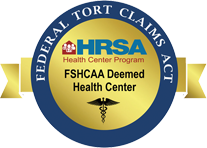Hypothermia occurs when our body loses heat faster than it can produce it. It can occur with exposure to cold weather and/or cold water that causes your body temperature to fall below ninety-five degrees.
The first sign of hypothermia is shivering. Shivering generates heat. It is your body’s way of trying to defend itself against the cold. Other symptoms include slurred speech or mumbling; slow, shallow breathing; a weak pulse; drowsiness or low energy; clumsiness or lack of coordination; memory loss or confusion; and loss of consciousness. A hypothermic person is usually not aware of their condition because the symptoms begin gradually. The confusion prevents self-awareness and can lead to risk-taking behavior.
Several conditions can lead to hypothermia. They include not wearing clothes appropriate for the weather, staying out in the cold too long, falling into the water, being unable to get out of wet clothes or move to a dry, warm place, and living in a house that is too cold. Prolonged exposure to any environment colder than your body can lead to hypothermia.
Three mechanisms your body loses heat through are radiated heat, direct contact, and wind. Heat loss from radiated heat means your body loses heat from unprotected/uncovered surfaces of your body.
When you are in direct contact with something that is cold, heat transfers away from your body. Water is very good at transferring heat from your body, so you will get colder if you have wet clothing or in cold water.
Wind carries away the thin layer of warm air at the surface of your skin so a high wind chill factor will make you more prone to hypothermia.
When you are exhausted your body cannot tolerate the cold as well as when you are warm. Your body’s ability to regulate temperature and sense cold lessens with age. Young children lose heat faster than adults and tend to ignore the cold if they are having fun. Sometimes they do not dress appropriately for the cold weather. Those with a mental illness or conditions that interfere with judgment may not dress appropriately for the weather either and may wander away from home and get lost. This makes them more likely to be stranded in the cold and develop hypothermia.
Alcohol can also be a problem. It causes your blood vessels to expand resulting in faster heat loss from skin surfaces diminishes the body’s shivering response, and affects judgement about wearing warm clothes.
Taking certain antidepressants, antipsychotics, narcotic pain medication, and sedatives can change your body’s ability to regulate temperature. Medical conditions such as hypothyroidism, poor nutrition, anorexia, diabetes, strokes, severe arthritis, Parkinson’s disease, trauma, and spinal cold injuries also affect the body’s ability to regulate temperature making a person more prone to hypothermia.
The best prevention for hypothermia is staying warm in cold weather with the simple acronym COLD. C for cover-wear a hat and other protective clothing. O for overexertion- avoid activities that cause sweating which causes your clothes to be wet and lose body heat faster. L for layers- wear loose fitting, layered, lightweight clothing. D for dry- get out of wet clothes as soon as possible and be careful to keep your hands and feet dry. Bringing children in as soon as they start shivering and having them come inside frequently to warm themselves up will also prevent hypothermia.
The first step in treating hypothermia is to call for help.
While waiting for help to arrive, move the person to a warm, dry place, remove any wet clothing, and cover their whole body with a blanket, using a second blanket under them to insulate them from the ground. Watch a hypothermic person’s breathing and preform CPR if breathing stops. If possible, provide skin-to-skin contact by removing clothes and wrapping yourself and the hypothermic person in a blanket to transfer heat. If the hypothermic person is conscious, provide warm drinks but no caffeine or alcohol. Be careful about rubbing or massaging the person as sometimes these jarring movements can cause cardiac arrest. Using direct heat (heat lamps or hot water) can actually damage the skin or trigger an irregular heartbeat.
In conclusion, understanding the signs, prevention, and treatment of hypothermia can save a life.








